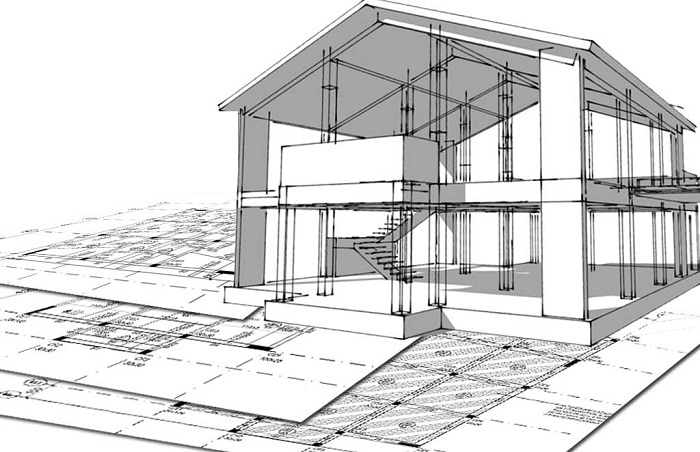🕑 Reading time: 1 minute
The entire process of structural planning and design necessitates not only creativity and conceptualization but also a comprehensive understanding of practical aspects, including recent design codes and regulations, bolstered by extensive experience, expertise, and discernment. It is crucial that any structure to be built meets the criteria of efficiency for its intended purpose and possesses the durability to endure its desired lifespan. Consequently, the design of any structure is delineated into two principal types:
- Functional design
- Structural design
Functional Design of Structures
The primary objective of constructing a structure is to fulfill its fundamental purpose while also presenting an aesthetically pleasing appearance. A well-designed building should create a conducive environment both indoors and outdoors. Therefore, the functional planning of a building must encompass meticulous consideration of room/hall arrangements to meet the client’s requirements, ensuring adequate ventilation, lighting, acoustics, and unobstructed views, particularly in the case of communal spaces such as halls and cinemas.
Structural Design
Once the form of the structure is determined, the process of structural design commences. Structural design is both an art and a science, involving an understanding of the behavior of structural elements under various loads, and designing them with efficiency and elegance to yield a safe, functional, and enduring structure.

Stages in Structural Design
The process of structural design involves the following stages.
- Structural planning
- Action of forces and computation of loads
- Methods of analysis
- Member design
- Detailing, Drawing and Preparation of schedules
1. Structural Planning
Following receipt of the architectural plans for the building, the structural planning of the building frame is undertaken. This phase entails determining the following:
- Position and orientation of columns
- Placement of beams
- Spanning of slabs
- Staircase layouts
- Selection of appropriate types of footings
1.1 Positioning and orientation of columns
Certain architectural principles guide the positioning of columns:
- Columns should preferably be situated at or near the corners of a building and at the intersection of beams/walls.
- Column placement should aim to minimize bending moments in beams.
- Larger spans of beams should be avoided.
- Consideration should be given to reducing the center-to-center distance between columns.
- Columns located on property lines must adhere to relevant regulations.
Orientation of columns
- Avoid projecting columns outside the wall, as this not only detracts from aesthetics but also limits floor space utilization.
- Column width should be at least 200mm to prevent them from being too slender.
- Column spacing should be minimized to distribute loads more effectively.
1. 2 Positioning of Beams
- Beams are typically positioned beneath walls or heavy concentrated loads to prevent direct loading on slabs.
- Larger beam spacing should be avoided to mitigate deflection and cracking.
- Beam spacing considerations are influenced by deflection, which varies with the cube of the span and inversely with the cube of the depth.
1.3 Spanning of Slabs
- The spanning of slabs is determined by supporting arrangements.
- Slabs may act as one-way or two-way systems based on support configurations.
- Provision of reinforcement influences slab behavior, with one-way slabs typically featuring main steel along the short span and distribution steel along the long span.
- Two-way slabs are often more economical for larger spans and heavier loads.
Structural Design of Foundations
The choice of footing depends on the load borne by the column and the bearing capacity of the supporting soil. Soil conditions can vary significantly, necessitating thorough site surveys to assess soil properties. Common foundation types include isolated column footings, pile foundations, raft foundations, and combined footings.
Assumptions in Earthquake Resistant Design
The design of earthquake-resistant structures is based on several assumptions:
- Earthquake-induced ground motions are impulsive, complex, and irregular, precluding the occurrence of resonance observed in steady-state sinusoidal excitation.
- Earthquakes are unlikely to coincide with other extreme events such as high winds, floods, or severe sea waves.
- Elastic modulus values for materials are typically assumed based on static analysis.
